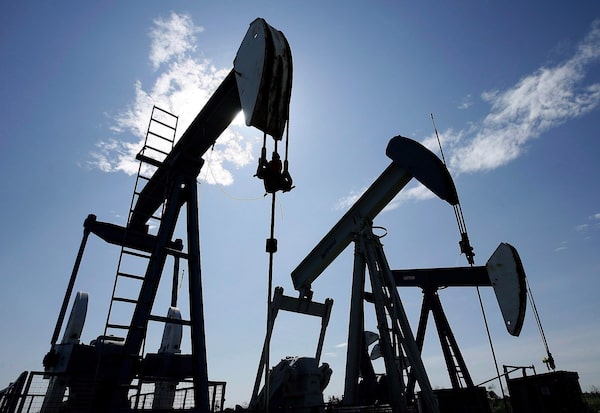
A national energy strategy should reflect Canada’s diverse energy resource base and the provinces’ diverse energy interests.Larry MacDougal/The Canadian Press
Brian Tobin is the Toronto-based vice-chair, BMO Financial Group, and the former premier of Newfoundland and Labrador. Aaron Engen is the Calgary-based vice-chair, investment and corporate banking, BMO Capital Markets
As far back as 1885 when the CPR was finishing construction of the railway as a condition to British Columbia joining confederation, major infrastructure projects were nation-building endeavors. Once a symbol of Canadian economic growth and prosperity, large-scale energy infrastructure project development has since become, at best, challenging and, at worst, impossible.
With its small capital base, Canada has relied on foreign capital to fund major projects and foreign capital was willing to invest in our stable, energy investment-supportive environment. Over the past decade, though, foreign and domestic investors have increasingly come to view Canada as an undesirable place to invest in energy and energy infrastructure. With the 180-degree change in investor perspectives on Canada, one must ask how we came to this point.
Chief among the culprits is the perception that we lack a clear national energy strategy. It would be difficult to overestimate the importance of good national public-policy making. Public policy shapes and gives direction to legislation, regulation, funding priorities, tax initiatives and government activity.
Few Canadians, it seems, are aware of Canada’s positions in the global energy world. We are a major player. We are the fourth-largest oil producer and the fifth-largest natural gas producer. Canada is the eighth-largest wind-power generator and is tied for second in hydroelectric power generation. And in uranium, Canada ranks as the second-largest producer.
Energy production is not just an Alberta issue. Every province is involved in the energy business and, although provincial energy production profiles vary significantly, they all have a single common feature – limited markets. Other than in uranium, Canadian energy is only sold domestically or into the U.S. Canada’s energy market reach is not global. That is a big part of the problem.
The lack of global market access has the greatest impact on Canada’s oil and gas industry. Without pipeline and port facilities to reach foreign markets, Canada is forced to sell production to the U.S., often at steeply discounted prices. And although Canada produces much more crude oil than it consumes, incredibly we import 760,000 barrels a day of crude oil from the U.S. and other foreign countries.
It cannot be in the national interest for Canada to import foreign oil and pay $40-million or more a day or $14-billion or more a year to foreign producers when that capital could stay here, at home, to purchase Canadian oil. At home, that capital would support Canada’s economy and provide the country with the strategic benefits of energy independence.
There are also policy issues to consider in the power sector – Canada does not have a national electricity grid. Instead, our regional electricity systems are largely aligned on a north-south, as opposed to east-west, axis. Without a transmission system designed to more ably move electricity around the country, provinces with limited hydro or green power generation cannot access renewable power from those provinces that have more than they need. Indeed, those with access to hydro power are selling that renewable power straight to the U.S.
So, what should a national energy strategy encompass? While there are many elements to consider, three are paramount.
First, a national energy strategy should reflect Canada’s diverse energy resource base and the provinces’ diverse energy interests. It cannot be designed simply to support international oil and natural gas exports, although they are vitally important to Canada.
Second, energy and Indigenous policies must be integrated. Indigenous peoples should derive appropriate economic benefits from responsible energy and energy infrastructure development, including energy export projects.
Third, energy and environmental policies must be integrated and function together in a balanced and sustainable manner. In a recent poll, almost seven in 10 Canadians said they believe action on climate change must be a priority. However, almost six in 10 said development of the oil and natural gas industry should also be a priority. Canadians want government to act on climate change, but also want to enjoy the economic benefits of the oil and gas sector. We can do both. This is not an either-or proposition as many would have us believe.
Canada’s diverse energy mix and varied provincial interests will make energy policy consensus building a challenging exercise. But if we rise above parochial interests and approach the work with mutual respect, we can get it done.
A new federal cabinet, with new players in the critical roles of intergovernmental affairs, natural resources and the environment, has been sworn in.
It is time to put away the megaphones on all sides and commit to a fresh start in renewing Canada’s national energy strategy.